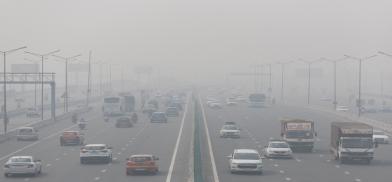COP28 commitments: Need for India to go beyond lip service and gimmicks
The pollution severely affecting the health of the population is of no consequence to India's politicians. It is high time our policymakers look at themselves in the mirror.

COP28 is underway from November 30 to December 12 under the presidency of the UAE. It is the largest UN Climate Change Conference held with the participation of leaders of nearly 200 nations convening to tackle the global crisis.
Commitment to establishing a fund to assist countries with the effects of global warming is the hallmark. Initial commitments of $100 million and $246 million made by the UAE and the EU respectively fall short of the $100 billion needed by developing nations to cope with the devastating effects of climate change.
China and the US are absent despite being the top two polluters in the world – China contributes 30 per cent towards global pollution and America 15 per cent. China bothers little about global opinion. The US exploits developing nations to further its own interests, not to mention causing pollution in foreign countries by waging wars – tons of bombs, thousands of missiles, depleted uranium ammunition and chemicals.
However, China and the US issued a joint climate declaration ahead of the conference; ‘remain committed to effective implementation” of the UNFCCC and the Paris Agreement.
Modi reiterated India's commitment
Speaking in the opening panel of the COP28, Indian Prime Minister Narendra Modi said, “India is committed to the UN Framework for Climate Change process. That is why, from this stage, I propose to host the COP33 Summit in India in 2028.” Modi further said India is committed to triple its renewable energy sources and reduce the emissions intensity by 45 per cent by 2030.
Modi said India’s striking balance between ecology and economy is a development model for the world. He proposed the Green Credit Initiative (GCI); focused on creating carbon sinks through people's participation.
Climate financing, technology transfer, empowering developing nations to effectively confront climate change, reducing emissions and renewable energy are without doubt vital for humans but India needs to look beyond COP28.
Ignoring geological warnings
Geological records show many large variations in the earth's climate; caused by multiple natural factors, including changes in the sun, emissions from volcanoes, variations in earth's orbit, levels of carbon dioxide and the like. Then, how are we ignoring geological changes even before we are fully equipped to combat climate change?
One recent example is the Silkyara tunnel collapse in the Himalayas, which mercifully had a happy ending - saving all 41 trapped workers after 17 days. But it was amazing to hear a minister say that nothing happened in the past four years before this collapse. But Anshu Manish Khalkho, Director (Admin & Finance), National Highway Development Corporation Ltd (NHIDCL) told the media that over the last five years “around 19-20 minor to medium-level collapses occurred during construction of this tunnel.’
Officials also said two earlier ”significant” collapses before 2019 impacted around two and 15 metres, which were repaired. They claim escape tunnels have been made according to approved plans. But the escape tunnels were obviously useless for the 41 trapped workers.
Our major concern should be how to redress blatant disregard of geologists and scientists' advice against constructing the Char Dham Highway in this manner (https://www.thecitizen.in/opinion/endangered-hills-army-joins-rescue-efforts-976848) and who is accountable? Will political expediency ignore similar future tragedies that are inevitable? Can gimmicks like allocating funds restore the sinking Joshimath town in Uttarakhand?
Equivocating on capital pollution
The second issue is India’s capital city New Delhi, classified as one of the topmost polluted cities in the world. This is an annual feature with a political slugfest between the central government and the Delhi government, plus peripheral interjections by the judiciary and the National Green Tribunal (NGT). The situation is getting worse with every year.
Delhi’s pollution level poses risks to even healthy adults, leaving aside children; leading to bronchitis, asthma, anemia, acute respiratory infections and nausea. The Delhi government plays the gimmick of using “odd-even” vehicles while the central government bans the use of BS IV diesel and BS III petrol vehicles, even when they were bought four years ago and certified as pollution-free. This also happens when vehicles contribute below 4 per cent towards Delhi’s pollution.
The double-engine corruption is that the banned vehicles (however temporary the ban) have one-year pollution certificates. The fine per violation is Rs 20,000, with booty shared up the pipeline. The moment the ban is lifted, these vehicles cause no pollution. The deliberate Inconvenience caused to the public is of no concern to politicians. Policemen who don’t cut 'challans' (fines) can collect cash for booze to keep them warm in winter. Naturally, government vehicles in the same category are never banned.
The judiciary has been talking about air purifying towers for Delhi, but two smog towers have been installed till now. A recent report by the Delhi Pollution Control Committee (DPCC) says these two experimental smog towers are effective but can mitigate air pollution up to 17 per cent within 100 metres radius only. The report further says considering Delhi's area of 1,483 sq km, Delhi needs more than 47,000 air purification towers, each costing Rs 25 crore for installation and Rs 15 lakh monthly for operation and maintenance.
On August 26, 2022 the prototype of Verto, a 360-degree multidirectional air purification tower that can clean 600,000 cubic metres of air per day, was inaugurated in Sunder Nursery Park, New Delhi.
Controlling farm fires in neighboring Punjab, Haryana and Uttar Pradesh in winter every year doesn’t go beyond lip service because of agricultural vote banks. Also, there is intermittent talk of artificial rain by politicians but there is no action on this front either. Everything is left to Mother Nature. The pollution severely affecting the health of the population is of no consequence to India's politicians. It is high time our policymakers look at themselves in the mirror.
(The author is an Indian Army veteran. Views are personal).
I might as well check things out. I like what I see so now i'm following you.
Look forward to going over your web page again.
too.
Hence .if we want to live and our children to exist beyond...2030, this paper provides the road map.
into the causes and leads to ameliorate the present situation...










Post a Comment